Virtual gastronomic tour of Peru
Virtual gastronomic tour of Peru
This edition is dedicated to the foodies … as we wind down our exhilarating three week trip to Peru join me on a virtual gastronomical tour of delightful Peruvian foods and beverages.
Although the first thing that comes to mind when you think of Peru is the world famous Machu Picchu, the true treasure is its rich culinary heritage.
While Peruvian cuisine is often characterised by the country's native aji chilies (often puréed into sauces), over 3800 varieties of potatoes and 150 varieties of corn, any gastronome will tell you Peruvian cuisine has distinct influences not only from their Andean roots but also from Europe (mainly Andalusia), Japan (there is a vast Japanese ex-pat community) and China (apparently from workers imported to work on the rail infrastructure).
The national dish and one of the most popular foods in Peru is Ceviche : essentially cold-cooked fish traditionally marinated for a few minutes in lime juice, onion, salt, and julienned hot chilies (aji). To balance the spicy protein, ceviche often includes a side of starchy boiled corn (choclo) and sweet potatoes (camote) or even dry roasted corn kernels (cancha). Locals warn us to eat it only in Lima where the chefs are skilled enough to handle raw fish
Lomo saltado is a prime example of Chifa (Chinese-Peruvian fusion cuisine). The Chinese influence dates back to the 19th century, when immigrant rail workers from Guangdong Province brought their woks and stir fries. Tender strips of beef or even alpaca meat, marinated in soy sauce and fried with onions, tomatoes, aji chillies, and other spices. Served with a classic East-meets-West combo of starches: french fries (potatoes are a staple of the Peruvian diet) and a mound of steaming white rice.
You can also find a vegan version of this classic Peruvian dish, with either Portobello Mushrooms or Fava beans used in this hearty, easy, and delicious appertizer or main entree.
Papas a la Huancaina (Potatoes in a creamy cheese sauce) : Ingredients include sliced golden potatoes drowning in a puree of queso fresco, aji amarillo, garlic, evaporated milk, and lime juice. This glorious golden ambrosia has a subtle spiciness. The perfect balance of tangy lime, sharp queso fresco, earthy potatoes, and the chill of boiled egg.
Cuy (Guinea pig): A precolonial delicacy best savored in Cusco. Make sure to ask for it to be served without the head and feet. Be prepared for a melt-in-your-mouth tender dark meat imbued with the taste of wood smoke, all beneath a crispy golden skin. In traditional Peruvian cooking, guinea pig is stuffed with local herbs and slow-roasted over an open wood fire. The dish is then served up with potatoes. A splash of aji sauce adds a nice spicy touch to this meat. Cuy is generally eaten with the hands like a piece of fried chicken (or more appropriately pigeon or quail)
Rocoto Relleno (Stuffed spicy peppers) : Red aji rocoto chilies 🌶 (10 times hotter than jalapeño). Core and hollow them out before stuffing with ground beef, garlic, onions, raisins, olives, herbs, and spices. Next, top it off with queso fresco and bake in an egg-and-milk custard.
Juane : is a traditional Amazonian boiled dish consisting of rice, fish or chicken, eggs and olives all wrapped in macaw flower leaves. In Tambopata rainforest resort they served us Juane with yuca root and paiche (the biggest fish in the Amazon)
Nikkei food (Peruvian ingredients with Japanese finesse) — tropical fish, quinoa, aji amarillo peppers bringing the best of two worlds to your taste buds.
Ají de gallina is a traditional comfort food consisting of shredded chicken slathered in a spicy and creamy nut-based sauce, served over white rice and boiled potatoes. Bright yellow—amarillo—in color, thanks to the famous ají amarillo, and rich from the unusual sauce of ground walnuts, this dish is hearty, filling, and delicious.
Trucha Frita (fried trout) : Best had in the Andean mountains where abundant cool freshwater sources allow rainbow trout (introduced from Canada) to thrive.
And last but not least even though not typical of Peru it was nice to find something familiar, Indian thali at a Cusco restaurant Gharwhal run by a young Indian boy - this was recommended to us and it didn’t disappoint
Bebidas (drinks)
For bebidas, let’s start with Chicha Morada the number one local non-alcoholic drink in all of Peru. It is made using purple corn (one of 150 varieties grown in the Andes mountains)
The #1 cocktail is undoubtedly a 20th century Lima-innovation called Pisco Sour. Made from the Peruvian brandy known as Pisco, a very strong wine brandy, and de facto national drink of Peru.
Yellow drink is juice of Maracuya, or yellow passion fruit - it is brighter yellow, heavier, and larger than the granadilla. There is a maracuya sour for those with a propensity for alcohol.
Juice of Cupuaçu (Theobroma grandiflorum) is native to the Amazon forest and is related to the cacao tree. The fruit is ovular with a brown rind and white fleshy pulp with a hint melon or pineapple.
Juice of Camu camu (Myrciaria dubia) - this is a shrub with cherry-red berries that grows in swampy or flooded areas of the Amazon rain forests. Being tart the berries are often used as a juice or super-food supplements
Mate de coca (herbal tea of coca tea) , is an herbal tea made using the fresh or dried leaves of the coca plant - an effective antidote for altitude sickness in the Andean mountains
Chicha de Jora is fermented with an alcoholic content of 1% - 3%. Jora is a type of yellow corn found commonly in the Andes mountains, so it is sometimes called the corn beer of Peru.
This is per sae not Peruvian, but comes from the South India state of Tamil Nadu - the avant-garde Paanakam : a refreshing creation of Gharwhal restaurant in Cusco said to contain jaggery , ginger , lemon , mint , green cardmom etc
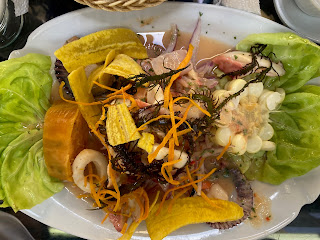












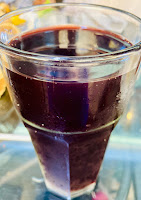









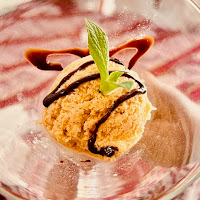
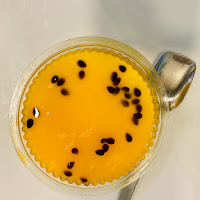
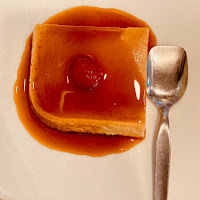



Comments
Post a Comment
Please keep conversations courteous and on-topic. Kindly don’t engage in trolling, flame-baiting, name-calling, insulting, stereotyping or gratuitous attacks. Thank you for being a good citizen.